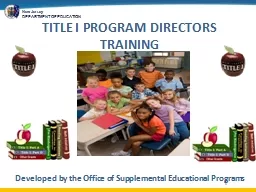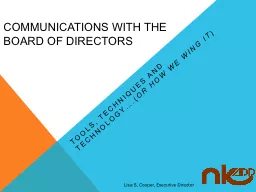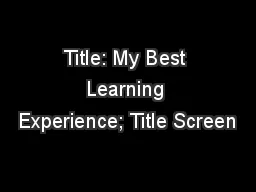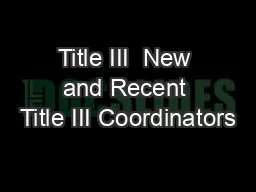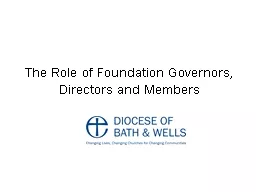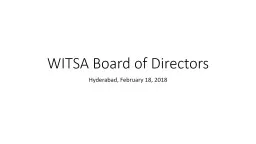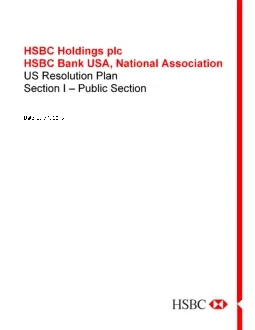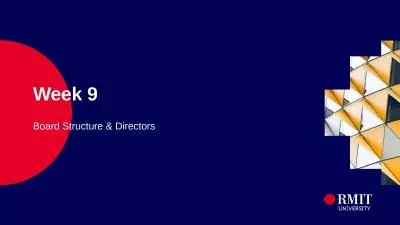PPT-TITLE I PROGRAM DIRECTORS TRAINING
Author : olivia-moreira | Published Date : 2019-12-01
TITLE I PROGRAM DIRECTORS TRAINING 1 Developed by the Office of Supplemental Educational Programs WAR on POVERTY 50 Years Later 2 WAR on POVERTY 50 Years Later httpswwwyoutubecomwatchvV3zmBUCVcI
Presentation Embed Code
Download Presentation
Download Presentation The PPT/PDF document "TITLE I PROGRAM DIRECTORS TRAINING" is the property of its rightful owner. Permission is granted to download and print the materials on this website for personal, non-commercial use only, and to display it on your personal computer provided you do not modify the materials and that you retain all copyright notices contained in the materials. By downloading content from our website, you accept the terms of this agreement.
TITLE I PROGRAM DIRECTORS TRAINING: Transcript
Download Rules Of Document
"TITLE I PROGRAM DIRECTORS TRAINING"The content belongs to its owner. You may download and print it for personal use, without modification, and keep all copyright notices. By downloading, you agree to these terms.
Related Documents

